The cost of a new roof in Virginia usually averages around $8,200. Yet, many elements such as the choice of materials, the specific design, overall labor required, and even location nuances can influence the final price tag. Delve into our detailed guide for comprehensive insights.
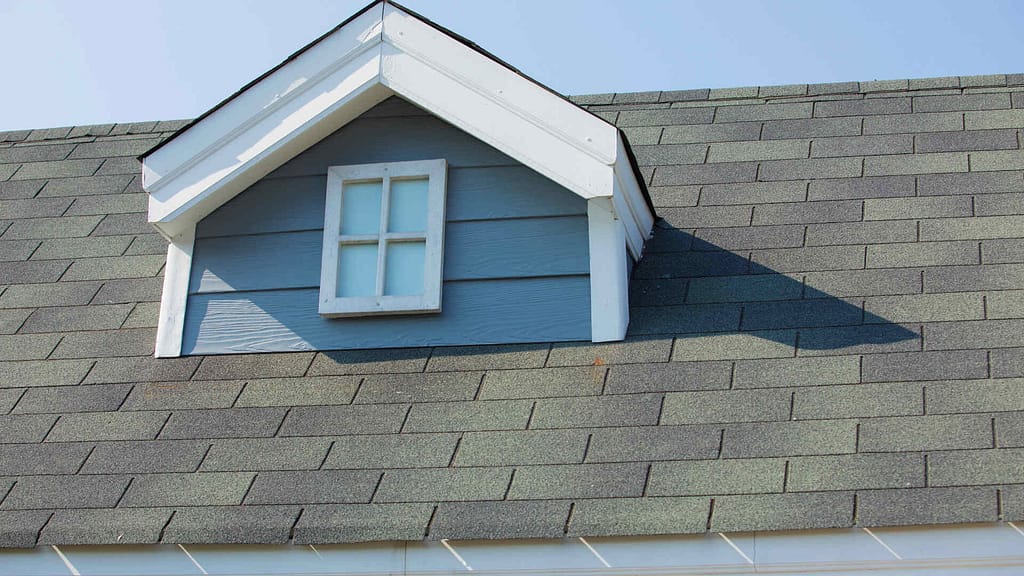
Table of contents
Factors Influencing the Cost of a New Roof in Virginia
In Virginia, the cost of a new roof depends on material choices, ranging from asphalt shingles to Tesla Solar Roofs. The roof’s size, design elements, and labor expertise further influence costs. Additionally, factors like old roof removal, disposal, and the property’s geographic location play roles in the final price.
Material Choices
When considering a roof replacement, the material you select is the primary driver of costs. Here’s a look at different materials and how they can impact your budget.
Asphalt Shingles

Popular for their affordability and versatility. An asphalt shingle roof can cost $6,000 to $13,000.
Wood Shake Roof

Offering a natural and timeless appeal, wooden roofs can be more expensive than asphalt but provide a distinct aesthetic. This classic look might cost between $8,500 to $22,000.
Metal Roof
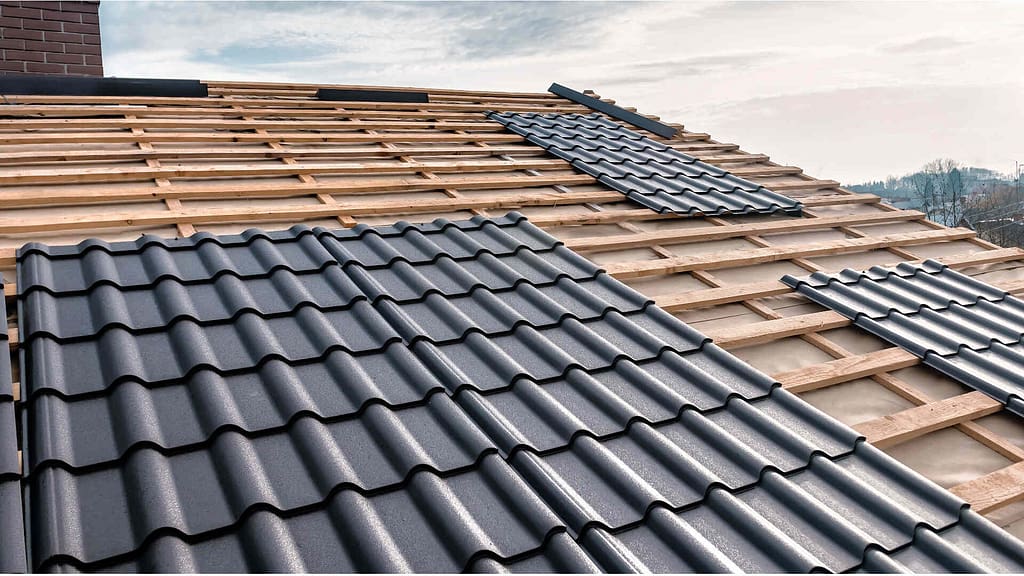
Durable and sleek, metal roofs come in a variety of types, from aluminum to copper. Prices can vary a lot here, from $8,000 to $80,000, based on the kind of metal.
Tesla Solar Roof
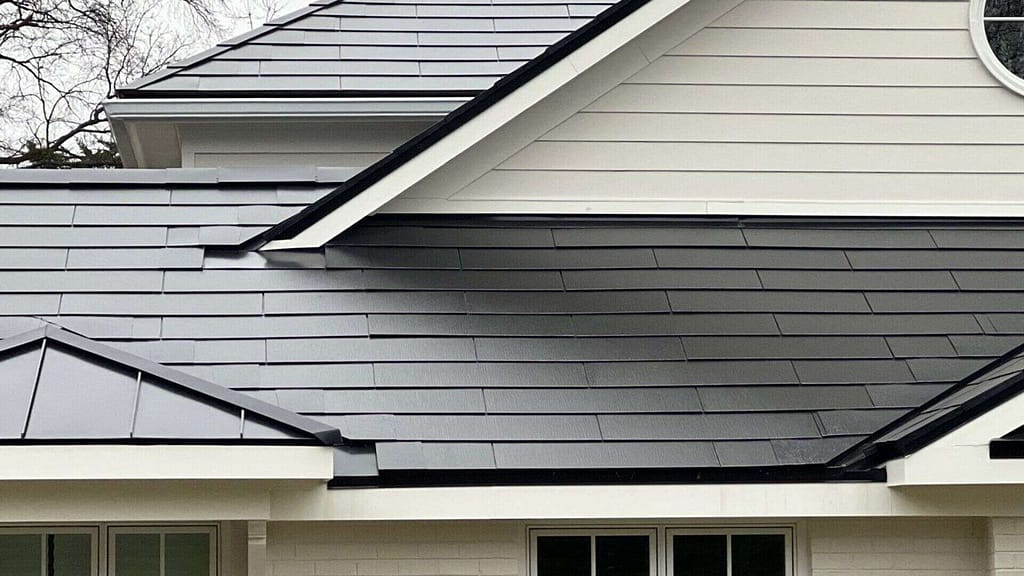
A blend of aesthetics and functionality, Tesla’s solar roofs might have a higher upfront cost, but they offer energy savings in the long run. The cost of installing a Tesla Solar Roof typically ranges between $62,000 to $120,000. Various factors influence this price, which might make the breakdown seem intricate. For an accurate estimate, please utilize our Tesla solar roof calculator.
Note: These prices are just ballpark figures. If you want exact numbers, it’s always recommended to get actual quotations for precise figures.
Roof Size and Complexity
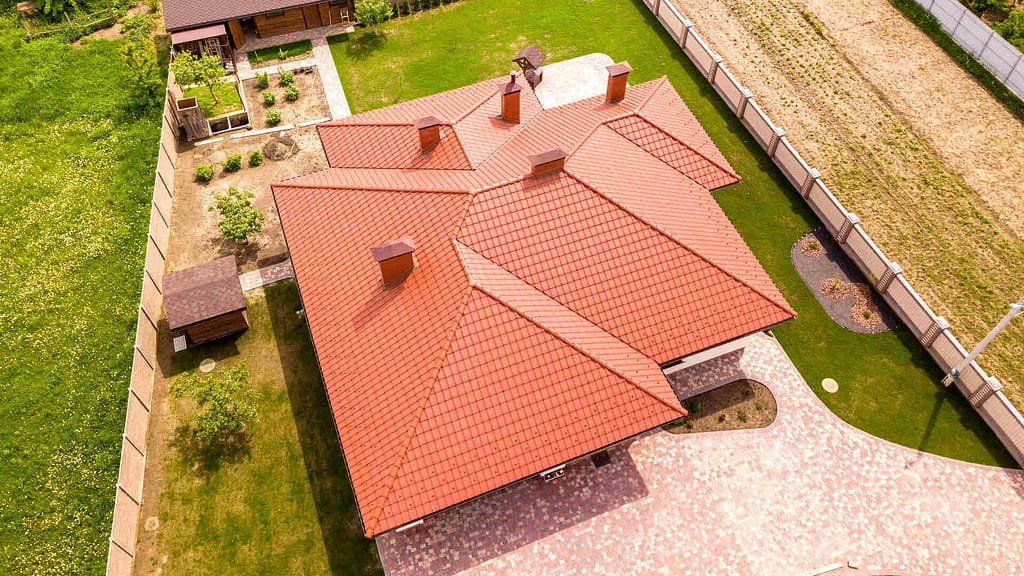
While materials are often the first consideration, the size and complexity of the roof play an equally critical role in determining overall costs. Here’s a closer look at how these factors influence pricing.
Roof Size
Quite simply, the larger the roof, the more materials you’ll need, and the more labor it will require. Roofing contractors often talk in terms of “squares” – a unit that covers 100 square feet. So, the total number of squares can directly correlate to the cost. If you have a bigger home or building, it’s reasonable to expect higher costs compared to smaller structures.
Roof Pitch or Slope
The angle of your roof can affect costs. Flatter roofs might be easier and quicker to work on, but they might require specific materials or treatments to ensure water drainage. Steeper roofs, on the other hand, require more safety measures and can be more labor-intensive, leading to higher labor costs.
Complex Features
A plain, rectangular roof is straightforward to work on. But if your roof has features like skylights, chimneys, dormers, valleys, or multiple levels, it increases the complexity of the job. Each of these elements requires careful work to ensure proper fitting, sealing, and waterproofing. They might also require specialized materials or techniques.
Labor Costs in Virginia
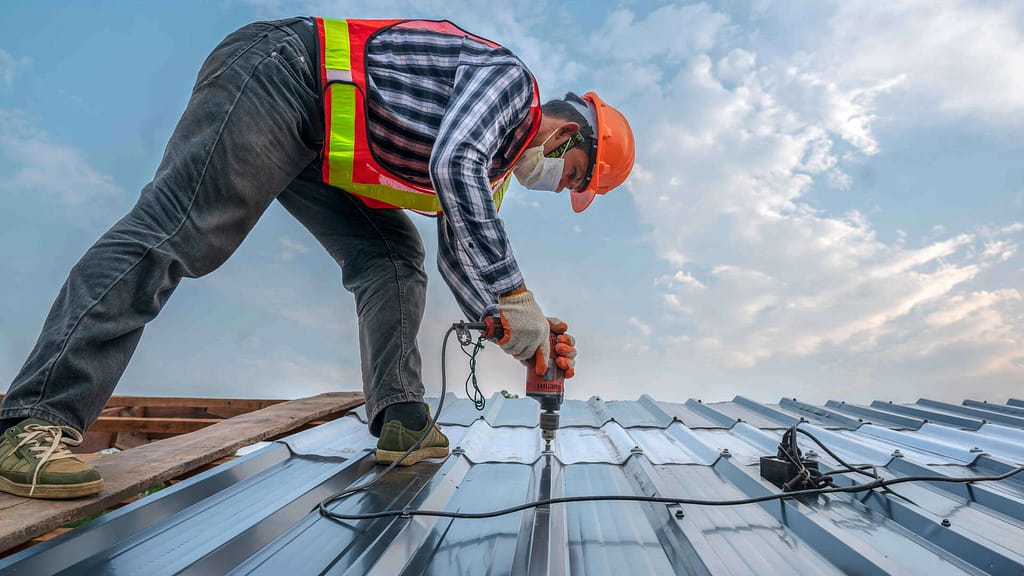
Roofing is a job that needs special skills. In Virginia, how much roofers get paid per hour can change based on their experience and the company they work for. Right now, the average hourly pay for a Roofer in Virginia is $18.43. It’s good to know that roofers with more experience might charge more, but they often do better work. This can mean fewer problems later on and a roof that lasts longer.
The duration of a roofing project plays a pivotal role in determining labor costs. Several factors influence this time frame: The unpredictable weather conditions, unexpected challenges like rotten wood or hidden damage, and the team’s size. While completing the job faster might seem cost-effective, haste can compromise quality. Thus, it’s essential to strike a balance between efficiency and ensuring the roof’s durability and long-term performance.
Removal and Disposal of the Old Roof
The process of replacing a roof goes beyond just the installation of new materials. Removing the old roof involves labor-intensive tasks, particularly if the roof was initially installed with sturdy fasteners. This removal can be time-consuming, more so if the roof has multiple layers or concealed damage. Moreover, specialized equipment is often needed to safely and effectively remove certain roofing materials without jeopardizing the structural integrity of the building.
Disposing of the old materials introduces another layer of costs. Transportation of discarded materials to a disposal site, especially for extensive projects, may necessitate the rental of a dumpster or truck. Costs may also accrue from landfill fees, contingent on local regulations, and the specific materials in question. While recycling options, such as for metal roofing, can help balance out disposal expenses, they can also come with their own set of fees. Furthermore, if the old roofing materials contain potentially hazardous elements, like asbestos, additional care and costs are essential for their safe removal and disposal. It’s paramount for homeowners to ensure their roofing quotes are all-encompassing to sidestep unexpected financial burdens during the roofing project.
Geographic Location within Virginia
The geographical location of a property, specifically whether it’s situated in an urban or rural setting, can greatly influence the cost of installing a new roof. Here’s a deeper look into how urban and rural dynamics play into roofing costs:
Supply and Demand Dynamics
In urban settings, such as cities and densely populated regions, the high concentration of buildings often leads to a greater demand for roofing services. This increased demand, coupled with a wider array of available roofing contractors, can result in a diverse price range, with some services priced higher.
On the other hand, rural areas tend to have a limited number of roofing contractors, which might elevate prices due to reduced competition. However, these areas might also see lower prices, reflecting fewer overhead expenses and decreased demand.
Accessibility and Transportation
The logistical challenges in urban areas, such as limited parking, traffic congestion, and restricted access to properties, can add to labor costs. Moreover, transporting materials in busy city environments can increase expenses.
While rural locations typically offer easier access, there might be additional transportation costs if the property is far from suppliers or if specialized equipment is needed to navigate remote or rugged terrains.
Additional Costs to Consider

If your home is within an HOA-governed community, there will likely be specific guidelines or restrictions on roofing materials, colors, and styles to maintain a cohesive neighborhood aesthetic. Before starting the roofing project, it’s essential to get approval from your HOA. This might require submitting plans or samples for review.
If you proceed without HOA approval or violate their guidelines, you might face fines. Additionally, the HOA could require you to make changes to your roofing project, adding unexpected costs.
Conclusion
In short, figuring out the cost of a new roof isn’t just about doing quick math. It’s about looking at what materials you’re using, how complicated your roof is, how much workers get paid, and where your home is in Virginia. Other things, like community rules and getting rid of old roofing, can also change the price. Homeowners should know about all these things so they can make smart choices and get a good roof without spending too much.
Fact checked by Adrian Catolico – 9/11/23